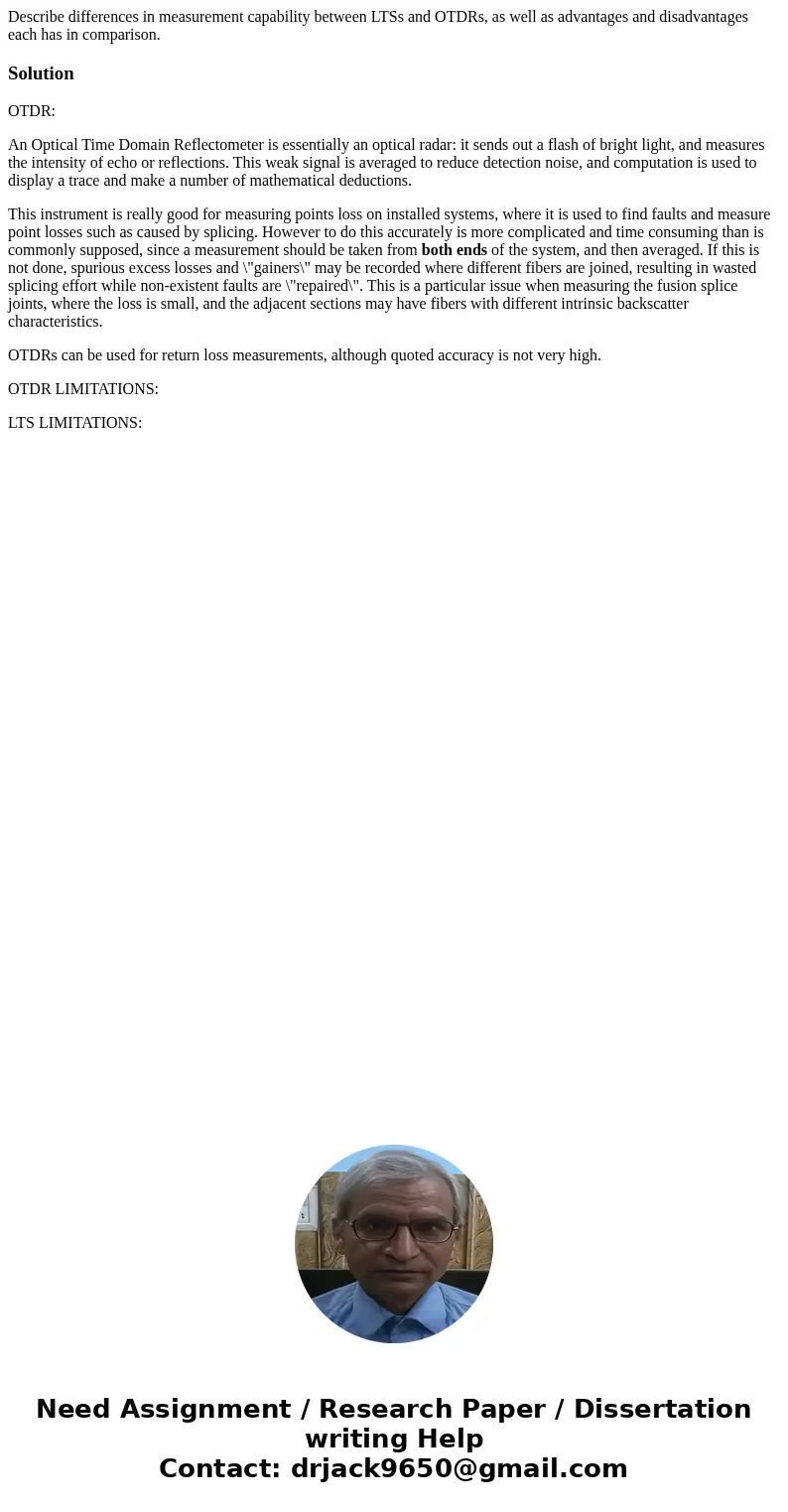Describe differences in measurement capability between LTSs
Describe differences in measurement capability between LTSs and OTDRs, as well as advantages and disadvantages each has in comparison.
Solution
OTDR:
An Optical Time Domain Reflectometer is essentially an optical radar: it sends out a flash of bright light, and measures the intensity of echo or reflections. This weak signal is averaged to reduce detection noise, and computation is used to display a trace and make a number of mathematical deductions.
This instrument is really good for measuring points loss on installed systems, where it is used to find faults and measure point losses such as caused by splicing. However to do this accurately is more complicated and time consuming than is commonly supposed, since a measurement should be taken from both ends of the system, and then averaged. If this is not done, spurious excess losses and \"gainers\" may be recorded where different fibers are joined, resulting in wasted splicing effort while non-existent faults are \"repaired\". This is a particular issue when measuring the fusion splice joints, where the loss is small, and the adjacent sections may have fibers with different intrinsic backscatter characteristics.
OTDRs can be used for return loss measurements, although quoted accuracy is not very high.
OTDR LIMITATIONS:
LTS LIMITATIONS:

 Homework Sourse
Homework Sourse